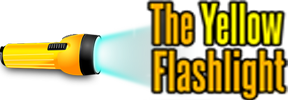As automation, new apps, and AI redefine industries, freelance graphic designers face immense opportunities and challenges. These technologies offer revolutionary tools to enhance creativity but also demand adaptation. Understanding the evolving landscape is crucial for designers to remain competitive and innovative.
The Rise of Automation in Design Tools
Automation isn’t something far off in the future; it’s already reshaping our daily design workflows. Many popular platforms like Adobe Creative Suite and Canva keep rolling out automated features aimed to simplify tedious tasks. Tasks like resizing images, cropping backgrounds, aligning items—all once time-consuming chores—now take mere seconds. This automation can be a great relief, freeing up more of my time (and yours!) to brainstorm, experiment, and refine our creative vision.
But here’s the catch. As helpful as these automated tools can be, there’s a definite need to stay sharp and tuned in to rapid-fire software updates. Missing out on recent improvements can quickly lead to a skill gap, making a once-efficient designer fall behind their peers. That’s why embracing automation means actively committing to continuous learning. Making an effort to explore new automation scripts or shortcuts within your favorite app quickly pays off in smoother workflows. For example, exploring automation deeper means diving into resources that teach you to automate repetitive design tasks with scripts and AI, giving your freelance business a solid competitive edge.
Emergence of AI-powered Creative Solutions
AI isn’t just automating tasks; it’s actively enhancing creativity through intelligent tools like image recognition and predictive color palettes. Imagine having software that analyzes a design brief and instantly suggests palettes tailored precisely to the project’s mood. Sounds futuristic, yet it’s happening right now. With AI-driven features, graphic designers can explore new ideas faster, sparking inspiration beyond familiar approaches.
But here’s where it gets tricky. While these innovations open doors to boundless creativity, we freelance designers must strike a balance. Relying too heavily on auto-suggestions can dilute our personal aesthetic signature—something clients ultimately value. I’ve learned to treat AI like a talented assistant, taking advantage of suggestions without losing sight of my creative instincts. For example, predictive color tools can jump-start ideas, but the final palette should reflect your judgement. If you’re curious about mastering this balance, check out this insightful guide: How to Use AI to Generate Creative Design Ideas. Ultimately, integrating AI successfully means blending tech-driven efficiency with the distinct, human touch that sets your design apart from the machine-generated noise.
Apps and Tools Enhancing Freelance Productivity
When I started freelancing, most professional-quality designs were possible only from heavy-duty desktop software. Fast-forward to the present, and we’re spoiled by mobile apps that give desktop programs a run for their money. Tools like Procreate and Sketch pack impressive features—from precise vector manipulation to robust layer management—making detailed design tasks possible right from your tablet or phone. What’s more exciting is how these apps streamline productivity and collaboration.
Take Procreate, for instance—its streamlined interface and intuitive gesture controls drastically cut down editing time. It’s a lifesaver when final edits pop up during a coffee shop break or while traveling. Sketch, on the other hand, focuses heavily on collaboration, letting freelancers quickly share prototypes and incorporate client feedback without tedious file transfers.
Beyond these apps, automation tools are evolving too. For instance, check out how you can Automate Repetitive Design Tasks Through Scripts and AI. Leveraging these combined resources offers freelancers not just improved productivity, but a serious competitive edge.
Adapting to the Shifting Freelance Landscape
As someone who’s spent years freelancing as a graphic designer and dabbling enthusiastically in tech, I’ve noticed that adaptation equals survival. The way clients value our work is shifting significantly due to AI-generated images and automated design platforms. Instead of resisting this change, the secret is to integrate these technologies into our workflow strategically. I’ve personally seen how designers are moving from execution-only roles to more consultation-based positions—becoming guides who help clients navigate through creative choices.
Staying aware of upcoming trends and adapting skills ahead of time is critical. For instance, getting comfortable combining your original designs with elements generated by AI can amplify your creative output and speed up delivery. Authenticity, a powerful voice, and storytelling still matter—AI hasn’t replaced that human connection yet. Additionally, mastering unique niches, such as maximalist aesthetics or minimalist themes, could position you distinctively in the market. Explore these approaches in-depth by checking Minimalist vs Maximalist Design: Which One’s Right for You?. Making these adjustments helps sustain not only creative fulfillment but also the steady stream of clients essential to thriving as a freelancer.
Final words
Today’s technologies bring both opportunities and challenges for freelance graphic designers. Embracing automation and AI, while mastering new apps, not only enhances creativity but also requires continuous learning and adaptation. Staying informed and updated is essential for maintaining a competitive edge and ensuring artistic integrity in a tech-driven world.
